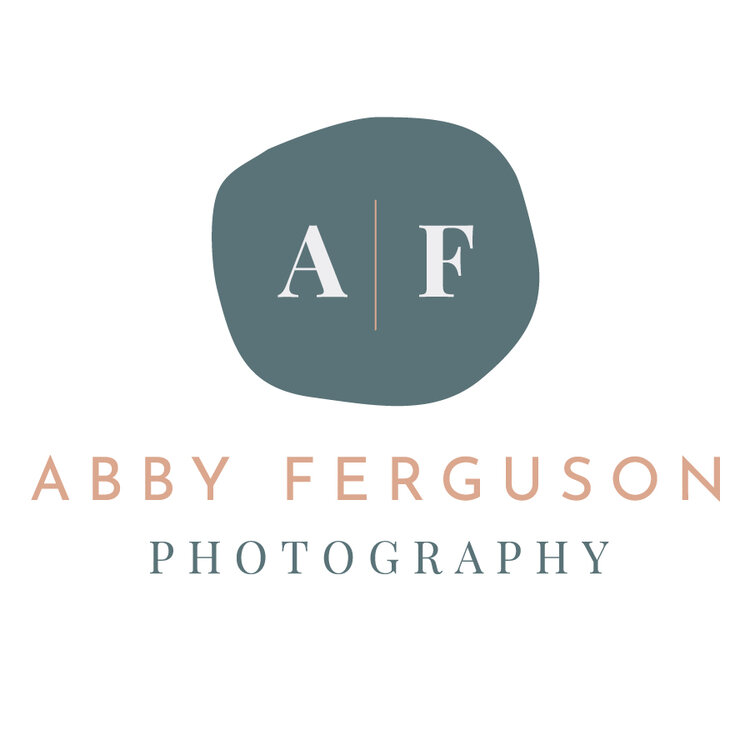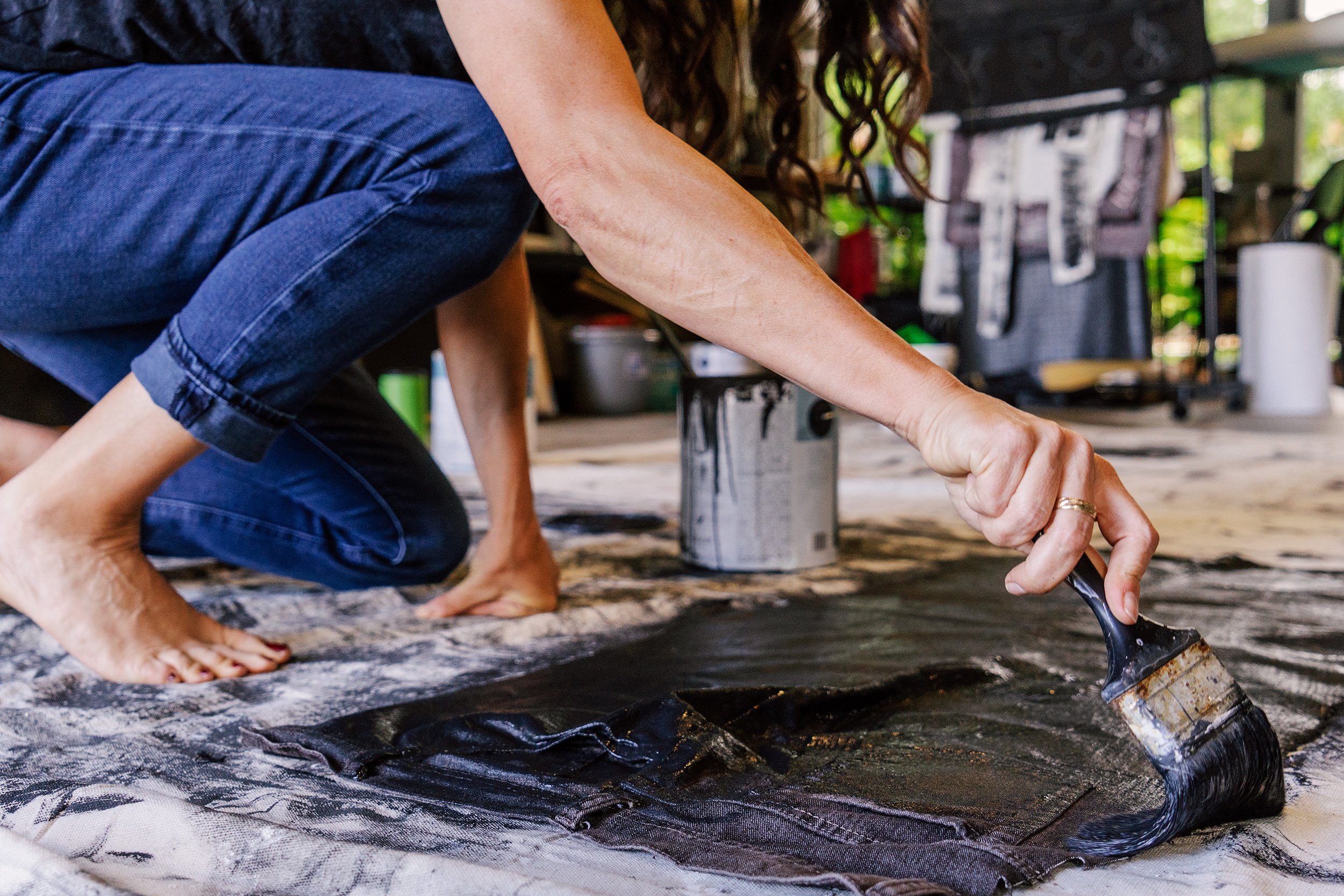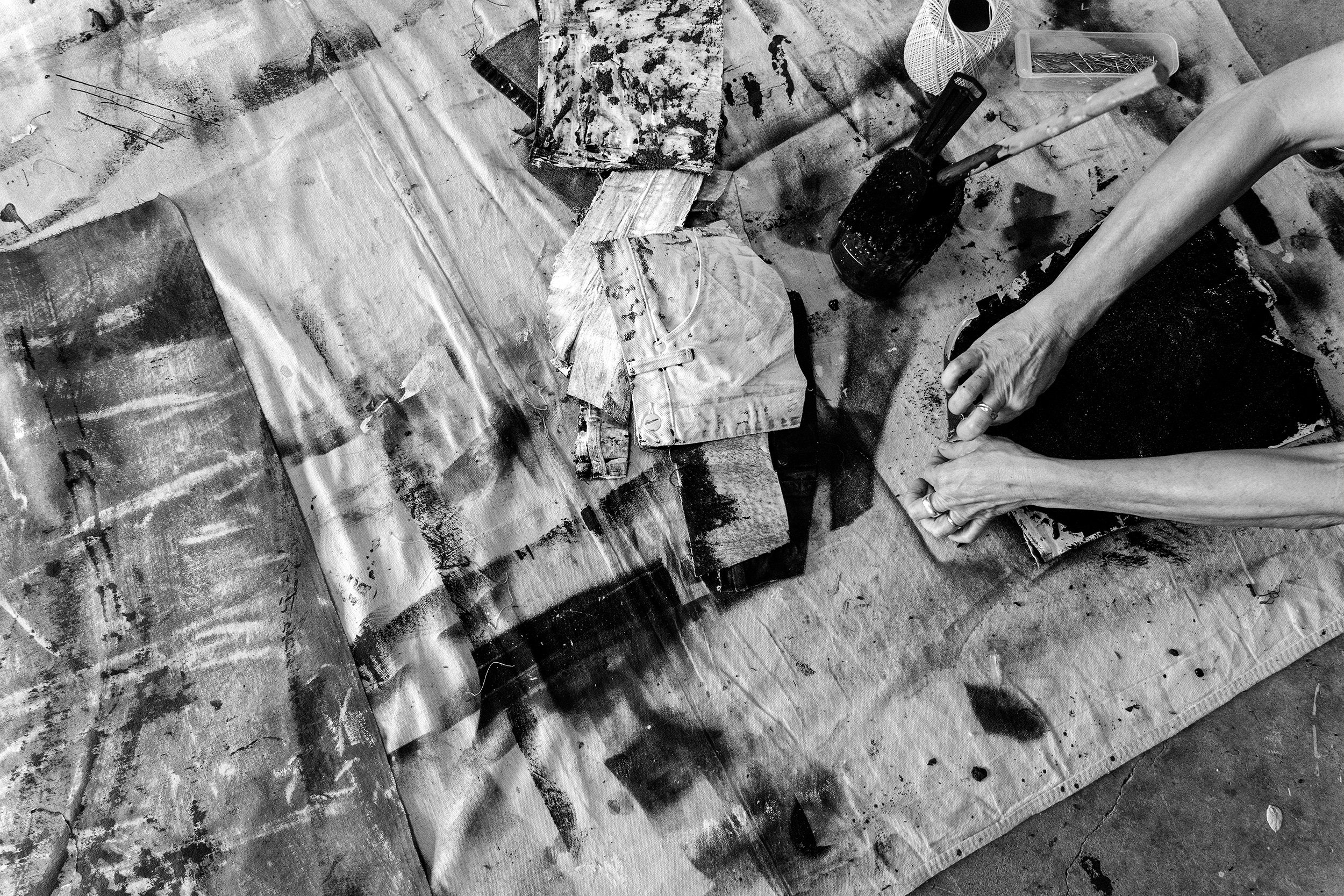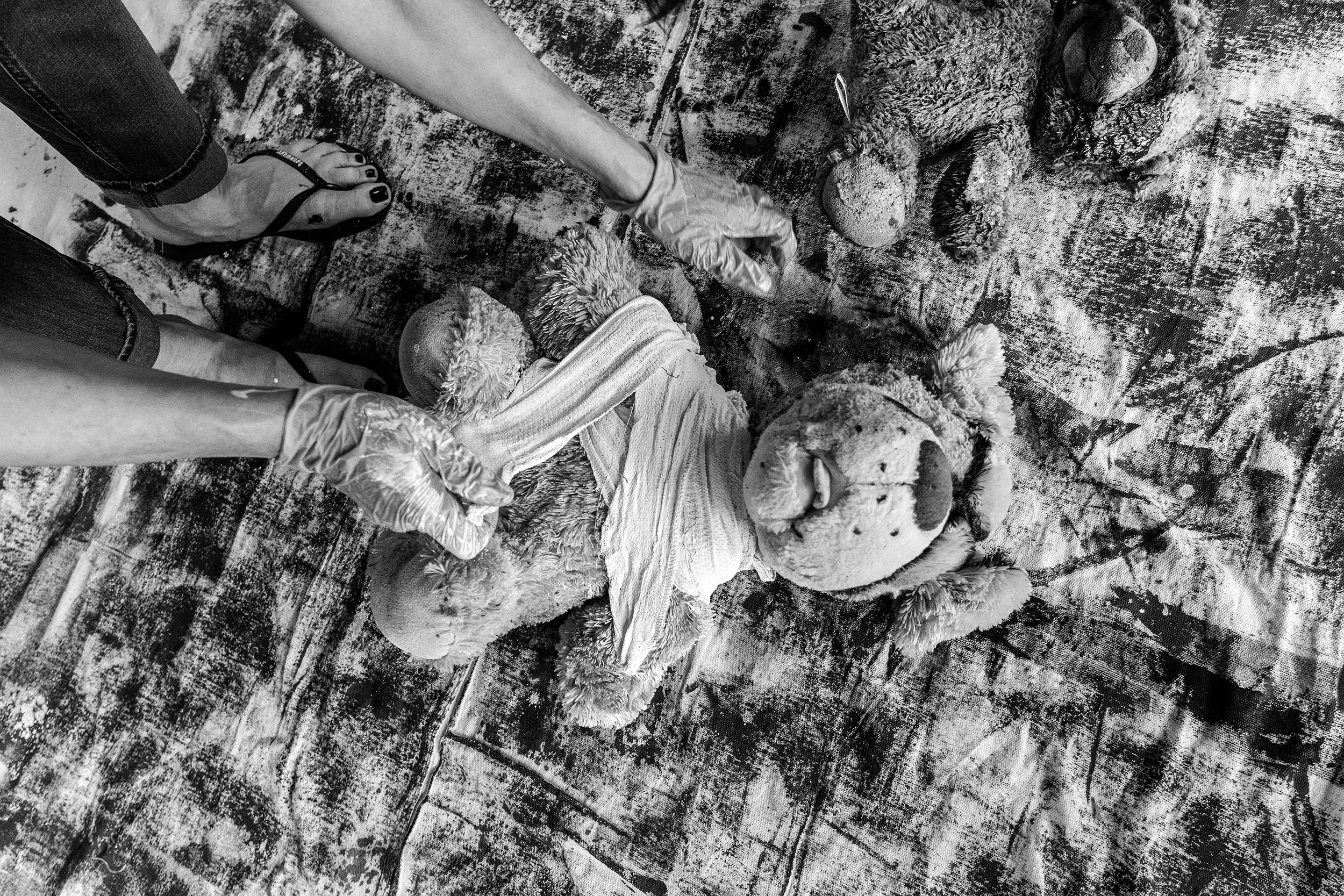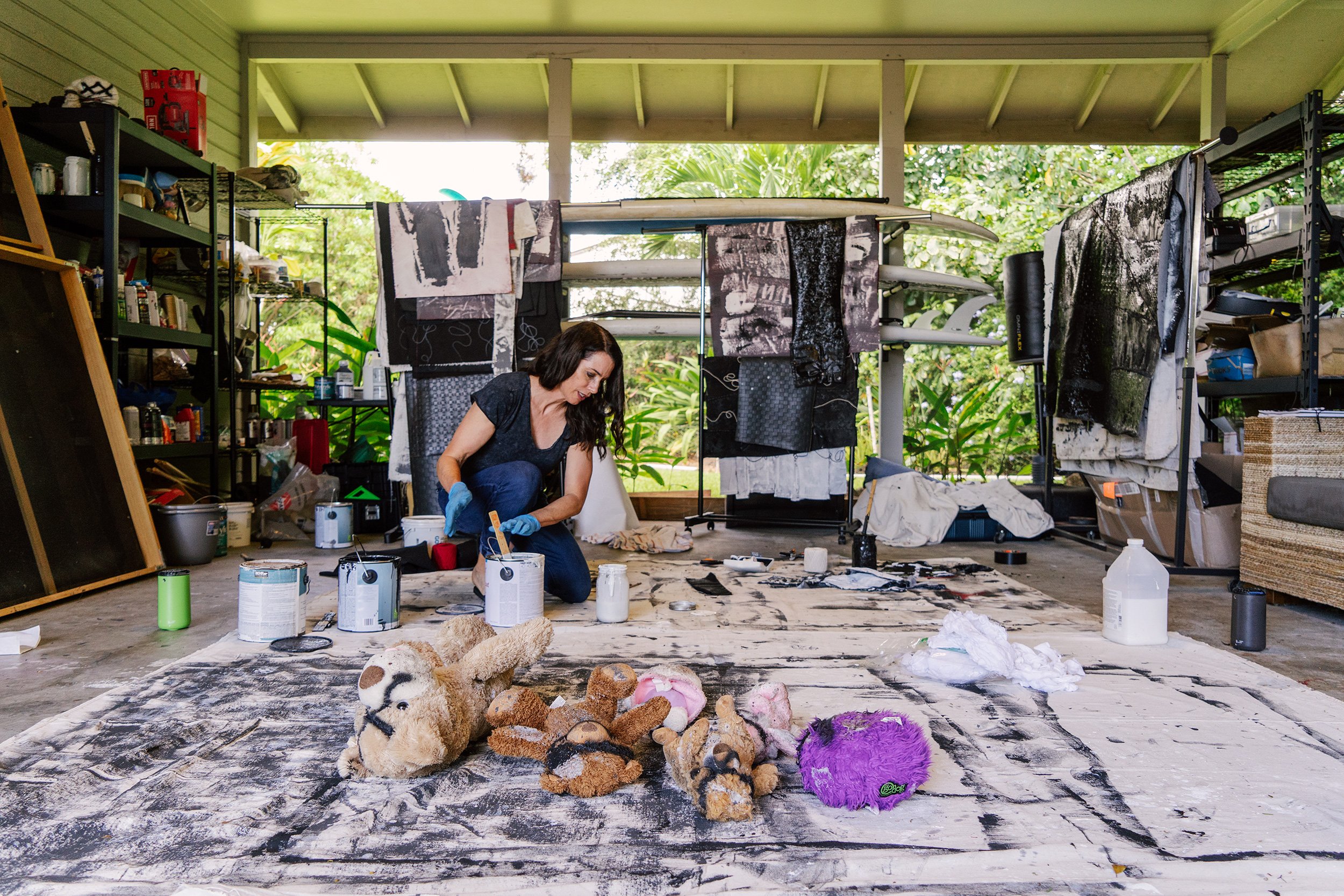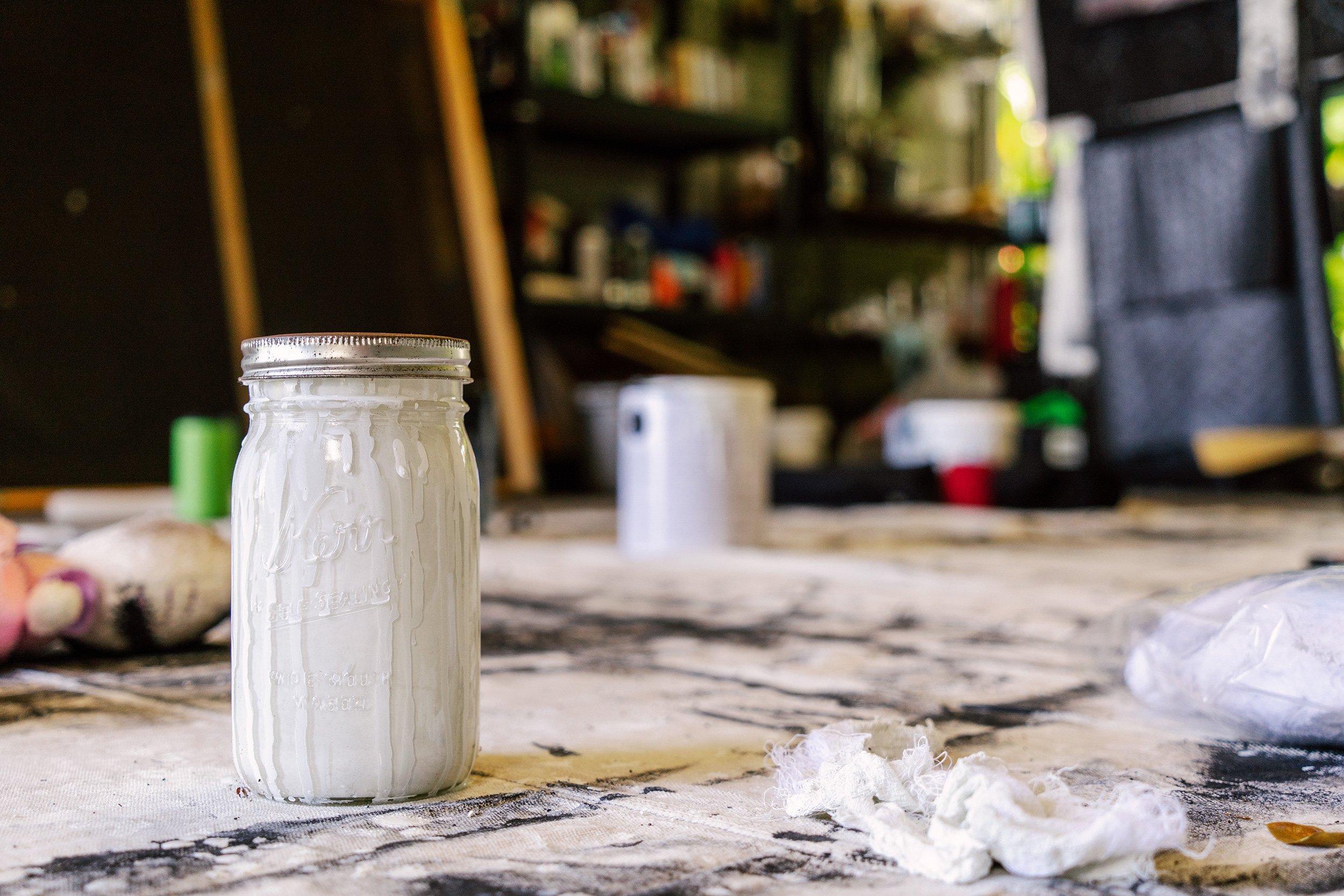I’m back with another incredible artist for you all! Back in September, I had the pleasure of meeting painter and mixed media artist Joy Ray in her studio in Kona. We had a great few hours talking about her art and the art world in general!
Joy is relatively new to the art world, but has truly jumped in headfirst and is already crushing it. She recently started working towards an MFA through the School of the Art Institute of Chicago and currently has her first solo show happening in Los Angeles! You can see more about her impressive solo show here.
I found Joy’s art like I’ve found most of the artists I’ve photographed so far, through Instagram. Another artist who I’ve photographed shared some of Joy’s pieces and I knew I wanted to photograph her at work. The foundation for her work is perhaps most easily described as painting. Paint is essentially how most of her pieces begin, after all. However, there is much more to her art than just painting, especially as she continues to develop her practice.
Joy’s work is subtle yet complex. She works almost exclusively with a monochromatic pallet of shades of black and white which helps to make her pieces bold and striking. Nature and hidden forces are regular themes in her art and her paintings frequently draw to mind decaying structures or abandoned objects.
One of the things that drew me to Joy’s work is her unique approach to the canvas. Instead of utilizing a traditional canvas, Joy pulls together a variety of materials that she stitches into a single piece. Before that happens, though, she paints them all to fit with her monochromatic pallet. All of her surfaces are thus treated more or less the same, making textures and materials that are dissimilar feel as though they belong together or have at least been melded together over time. She also uses fabric that will be used later as a drop cloth of sorts, catching whatever paint that seeps through and showing brush marks on the edges. This simple act leaves behind remnants and fragments of what was initially painted. Once combined in her pieces, it provides a hint of something that was once there but nothing more, a theme that consistently runs through Joy’s work. The body of work featured in her solo show, titled Ghost Visions, plays with that idea throughout the paintings. It feels as though something was there and left its mark, but it’s unclear what or how.
Around her studio are stacks and stacks of various types of fabrics and materials that she has collected and prepared to be used in her paintings. She frequently uses denim from thrifted clothing items, but also incorporates a range of fabrics, including vinyl. Finding used or thrifted materials is of significant importance to Joy, especially in her latest body of work, because of the inherent yet unknown histories that found materials have. The jeans that she finds in a thrift store have their own past life and story, even though the details are unknown to her. The particular history doesn’t matter, and in fact, the mystery is perhaps more valuable than a known narrative.
All of Joy’s work is extremely rich with texture, in part a result of adding additional textures to her fabrics. She does this in a variety of ways, but frequently she mixes sand into black paint to create the gritty texture you see in many of her paintings. While I was there, she prepared one piece of denim by taping some lines and layering the sandy paint on thick, building up a robust, textured layer of black paint to stand out in contrast to the smoother white denim.
One of the next steps in Joy’s process is to stitch together the individual pieces of fabric to make a larger composition that will later be stretched onto a canvas. Sewing and stitching were what actually got Joy started more seriously in art and it is still an integral part of her process. At times the stitching is simply used as a practical way of connecting two different pieces of fabric, but she also purposefully leaves the stitches visible to add even more texture and interest.
Recently, Joy has started to experiment with sculptural work, specifically found object sculptures. Just like the materials she uses in her paintings, the importance of a history already tied to an object is important in her sculptures. Viewers are left to wonder what the story behind the object was and are allowed the room to fill in their own narrative.
In order to help the sculptural work fit together with the wall pieces, all of Joy’s found objects are painted either white or black, frequently with texture added. Raw, rugged texture and grittiness is a consistent visual aid for Joy and it is no different with her found-object sculptures. It brings about thoughts of something left behind in nature, in the process of decay and being lost within the earth. In fact, while prepping the stuffed animals for her solo show, she rubbed them all in the dirt to help give the appearance that they had been forgotten about.
Once they were sufficiently dirty, she began the process of wrapping them almost in a paper mache-like manner and then binding some of them with string. I loved the contrast of a cute, cuddly, childhood toy being made to reflect something darker and almost sinister looking.
Joy has also started to experiment with metal sculptures etched with script-like shapes. This idea is something that Joy introduced me to and is something that I am now in love with. It is called Asemic writing, which means, “having no specific semantic content.” It is essentially a form of abstract calligraphy to suggest writing, but it has no inherent meaning. Writing in a variety of forms has been part of many of her pieces before, but I am very excited to see where she takes this new idea and the new materials in her work!
